‘Jom makan!’: Is there anything more Malaysian than what we eat?
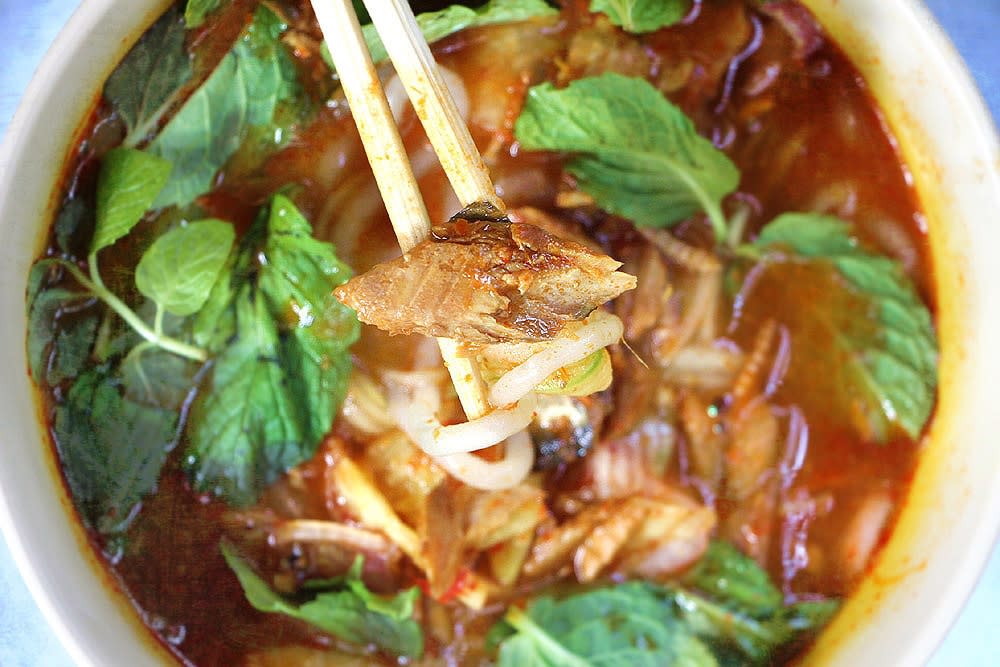
COMMENTARY, Aug 29 – "Jom makan!”
I’m trying to teach my Italian friend Manuel a few local phrases, which given what a cultural and linguistic sponge he is, looks to be an easy endeavour.
He has lived in Germany and Kazakhstan, Poland and Italy (of course), picking up new languages and dietary preferences along the way. Yet it is Malaysian food that he misses the most.
The last time he was in Malaysia was years ago, with his wife on their honeymoon. I had taken my friends to all my favourite places for food.
They had skewers of smoky, charcoal-grilled satay; char kway teow, infused with wok hei; fruity and pungent rojak; sweet and slurp-worthy mee rebus; and so much more.
The newly-weds even had durian! (I’m sure that gave them a memorable honeymoon in more ways than one.)
For Manuel’s first meal in Malaysia after over a decade away, I decide to give his jaded palate a piquant kick with a bowl of asam laksa. His eyes brighten after the very first slurp, the jet lag melting away.
His first words after that: "This is so good. I wish I could have this every day!”
Is there anything more Malaysian than what we eat?
This Merdeka, I’m doing something different and viewing our illustrious local cuisine through the lens of my non-Malaysian friends.
This seems odd to you, dear reader. After all, non-Malaysians don’t celebrate our National Day – or do they? (Read on and we shall see.)
Yet we Malaysians are nothing if not consummate hosts to our guests. Some of my foreign friends might secretly ponder if I might not be too ardent in my hospitality; they typically beg off from eating any more, after we drag them from one eatery to another.
Often enough it’s the diversity in our cuisine that delights friends when they visit Malaysia.

Quench your thirst for caffeine and conversation with 'kopi' or 'teh tarik'.
I recall how my Japanese friend Satomi would cherish how she could quench her thirst for caffeine with robust kopi or frothy teh tarik, while having the breakfast of champions: a simple piece of roti canai with a saucer of mildly spiced dal on one side of our table, and a jug of eggs being half boiled in hot water on the other.
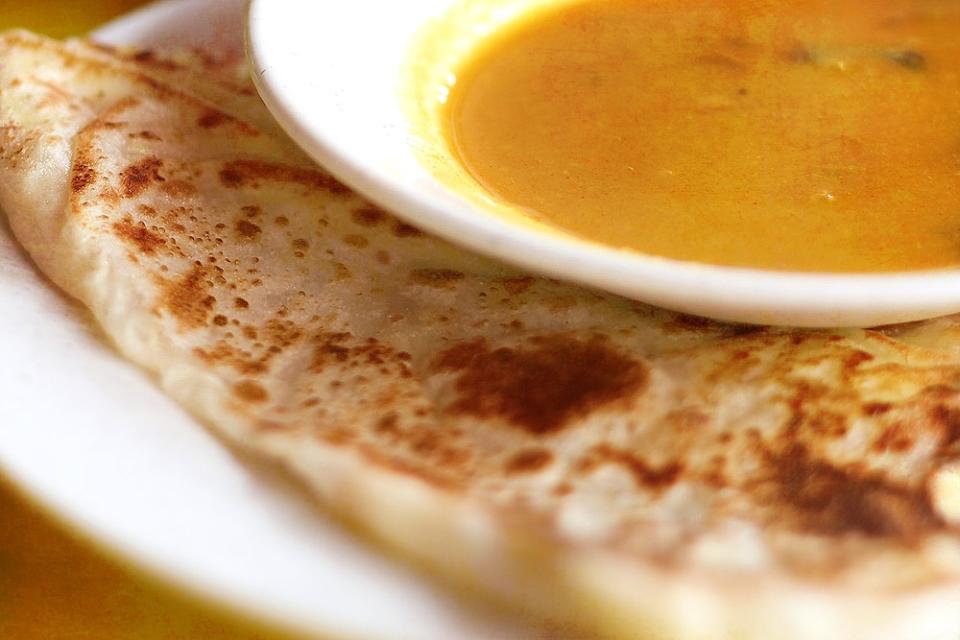
The simplest way to enjoy roti canai is with a saucer of mildly spiced 'dal'.
Part of the fun is in "making your own breakfast”, she would tell me, as she enjoys her kopitiam style half boiled eggs, cracking them into a bowl when they are ready, the old school way. And instead of shakers of salt and black pepper, a squirt of soy sauce and a dash of ground white pepper. Perfection.
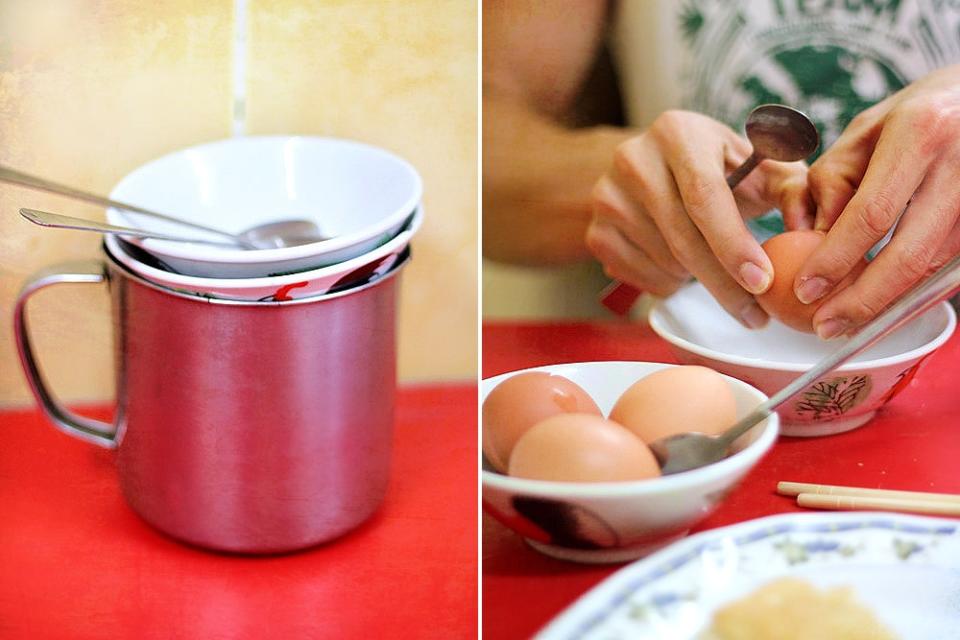
Preparing 'kopitiam' style half boiled eggs, the old school way.
For Satomi, Malaysia tastes like a kopitiam breakfast.
I had mentioned that my friend Manuel’s first meal upon arriving in KL was a bowl of asam laksa. Actually this is not quite right. He needed coffee first, he told me, after I had picked him up from KL Sentral, so the first bite he had to go with his morning caffeine was actually a slice of roti bakar.
Rich and sweet with a pat of bright yellow butter and stunningly green kaya, the roti bakar always delights him. Manuel marvels at the thermic contrast between the cold butter and the hot bread (or bun, sometimes), the textural difference between the silky-smooth kaya and the crunchy toast.
Our northern neighbours love sweet things too, the sweeter the better. So I made sure that when my Thai pal Nitipon visits KL, he had a chance to sample everything from the layered kuih seri muka, half pandan custard and half butterfly pea marbled rice, to freshly made putu piring, piping hot from the steamers.
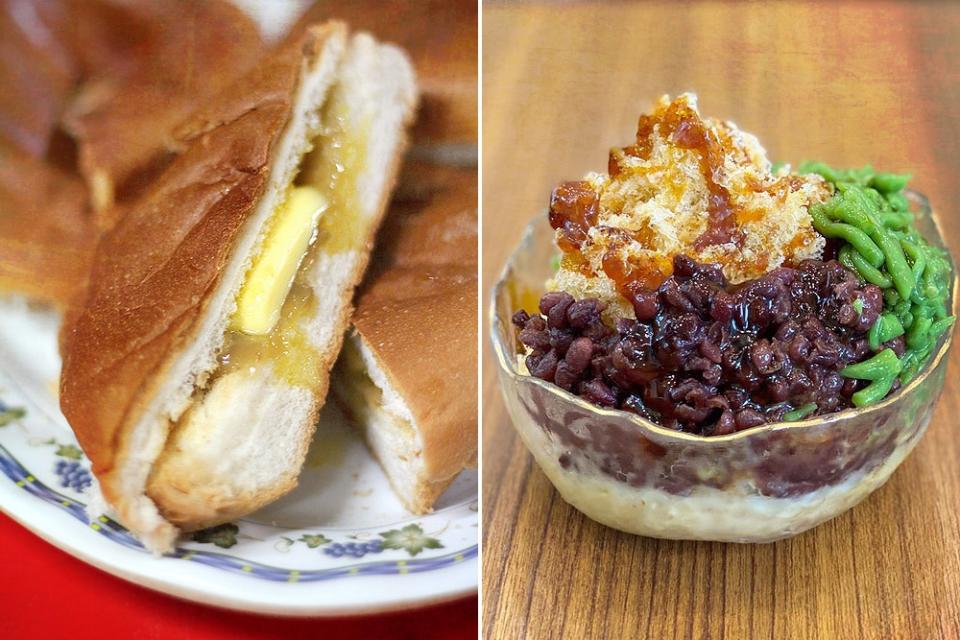
Rich and sweet: 'roti bakar' and 'ais kacang' with 'cendol' and 'gula Melaka'.
Nitipon’s favourite is probably ais kacang with cendol and gula Melaka, especially when the weather is sweltering. The finely shaved ice, the tender red beans, the strands of cendol made with real pandan, the fragrant gula Melaka syrup. What’s not to like?
For Nitipon, the taste of Malaysia is ais kacang.
By now, it might not surprise you to learn that every year when August 31st rolls around, my friends from all over the globe will make a point of wishing me and my loved ones here "Happy National Day!” or even "Selamat Merdeka!”
It’s easy to think of non-Malaysians as hi-bye visitors, tourists for the most part. This might be true but who’s to say our magnificent country doesn’t leave a lasting impression on them?
You would be proud to learn that some of them dream of returning to our beautiful shores, to eat their favourite Malaysian foods and meet their beloved Malaysian friends again.
They don’t take their opportunity to travel here and experience Malaysia for granted, and we shouldn’t either, honestly.
For all our quarrels and all our quibbles, our nation is a terrific place to be in – to grow up and to make a good life for ourselves – though sometimes we forget that.
I am reminded of this whenever my busy Taiwanese American friend Jess drops by for a short vacation, a respite from her busy career in Hong Kong. I mention this only to demonstrate that surely she is cosmopolitan enough in her tastes and well travelled, too.
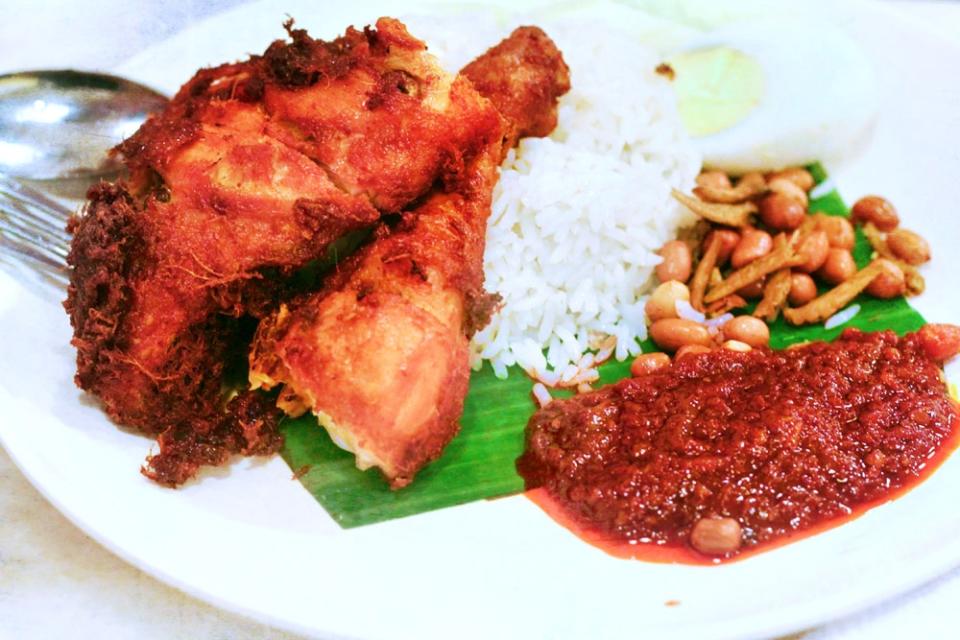
Is there any food more Malaysian than 'nasi lemak'?
Yet all she wants after landing at KLIA is her favourite plate of nasi lemak – the fluffy grains of santan-infused and pandan-perfumed rice, half a hard boiled egg, the crunchy ikan bilis and peanuts, spicy-sweet sambal and a piece of mouthwatering, just-fried ayam goreng...
I don’t need more, she says.
I have to agree.
She adds, almost rhetorically: Is there any food more Malaysian than nasi lemak?
Perhaps not. Indeed, is there a more Malaysian way to celebrate all our blessings with the amazing food we have?
That, as Manuel hastens to remind me, before flying back to Krakow with a promise to return soon with his family: "You are so lucky to get to eat this all the time.”
We are indeed lucky, so very lucky, to be Malaysians and give thanks for this, every single day and not just when it’s Merdeka.
For more slice-of-life stories, visit lifeforbeginners.com.
* Follow us on Instagram @eatdrinkmm for more food gems



